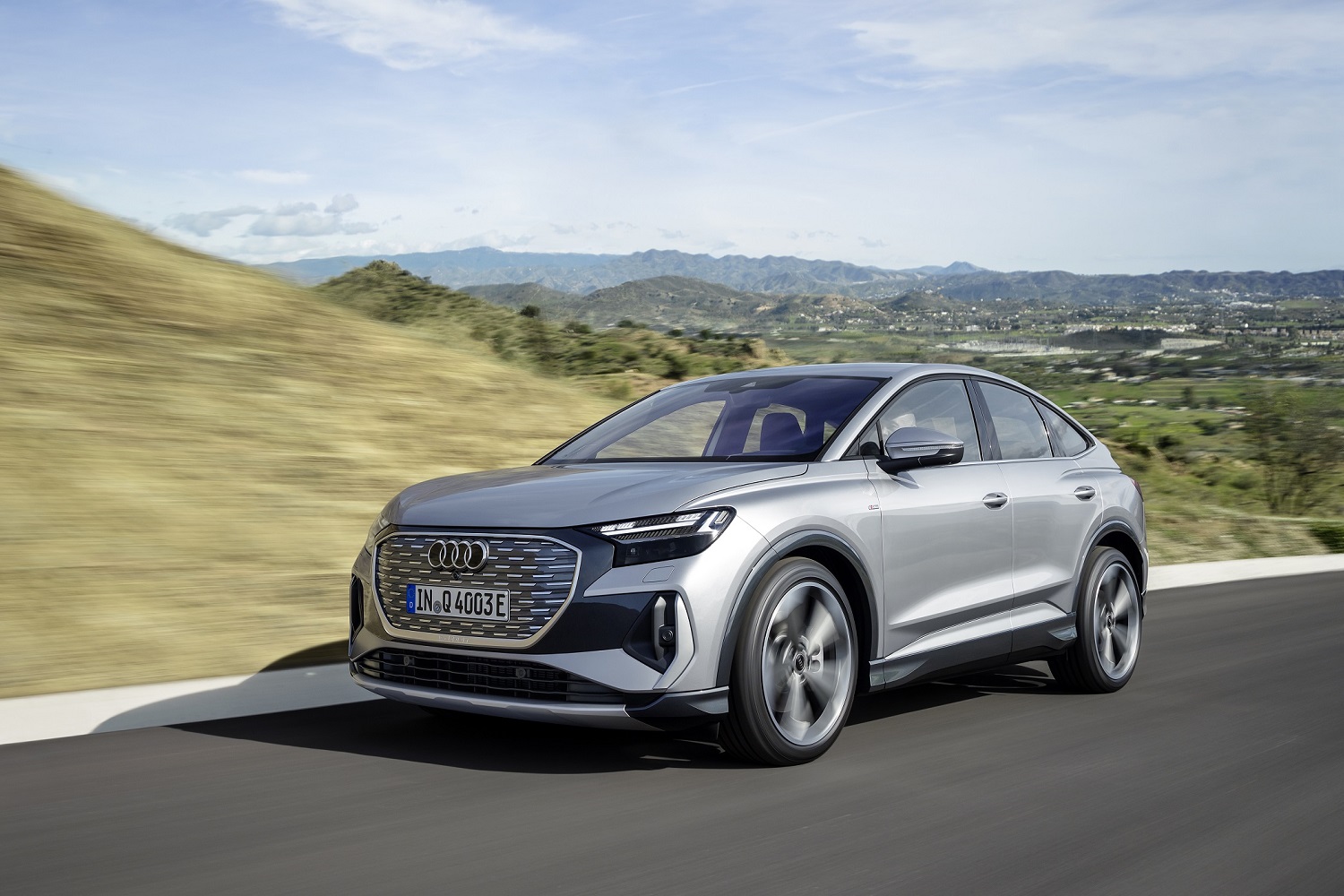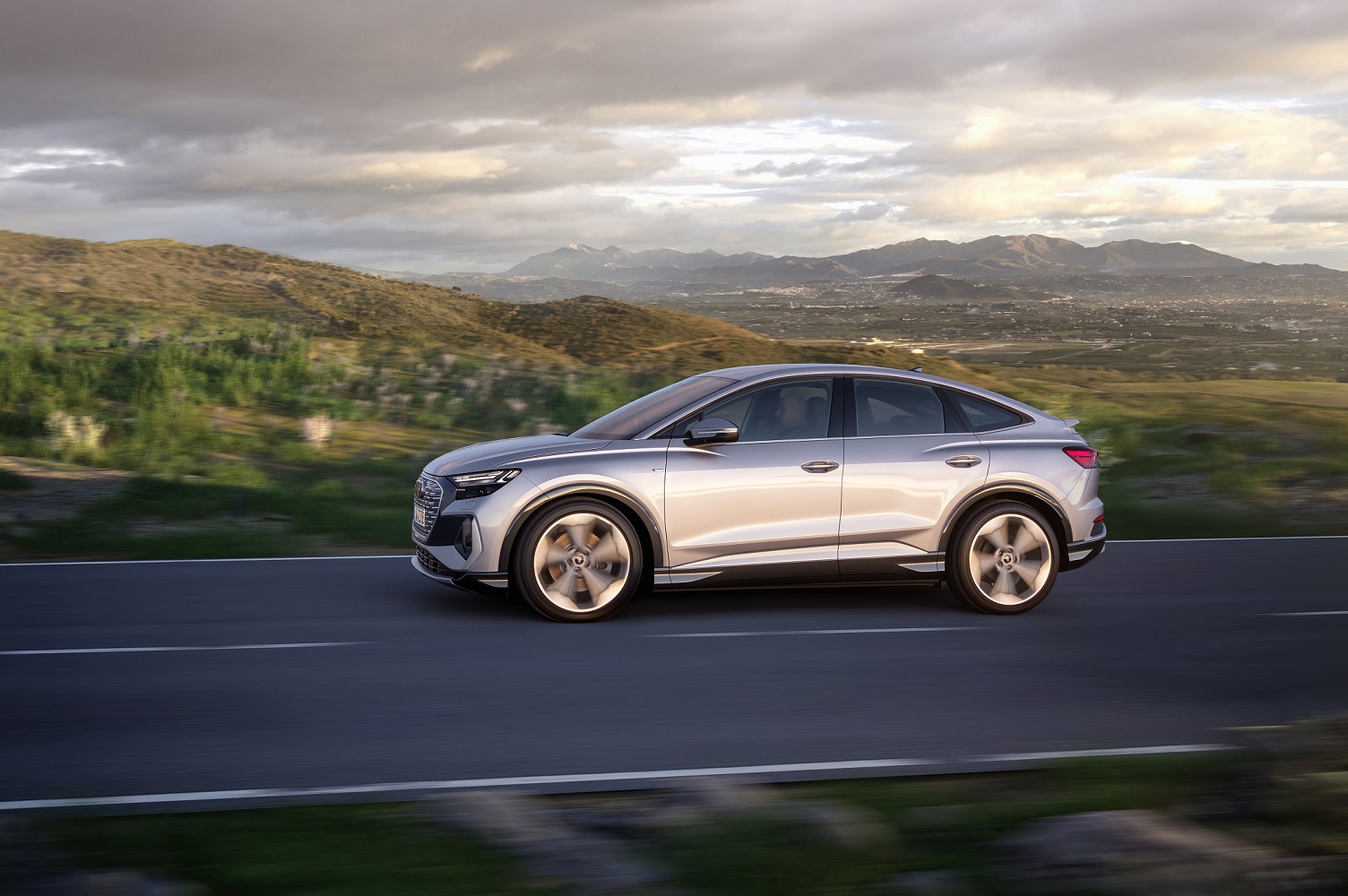Electrification is spreading across the Audi range at a shockingly quick pace. Shortly after unveiling the E-Tron GT fastback, the German firm launched a pair of battery-powered crossovers named Q4 E-Tron and Q4 Sportback E-Tron, respectively, that were developed to bring electric driving to one of the biggest segments of the market.
Previewed as a close-to-production concept in 2019, and again as a thinly camouflaged test mule in 2021, the Q4 E-Tron is positioned as the smallest and most affordable member of Audi’s EV range. It shares some styling cues with the bigger E-Tron, like sharp headlights and an octagonal grille, but it stands apart with unusual proportions characterized by a short front overhang and a long wheelbase that clears up a generous amount of space inside. If roominess isn’t your priority, the Sportback model trades practicality for a stylish, coupe-like roofline.
At about 180 inches long, 73 inches wide, and 63 inches tall, the Q4 E-Tron is roughly as big as a Q3, the smallest soft-roader that Audi sells in America. And yet, the company told Digital Trends its interior space is closer to a Q7’s, the firm’s biggest SUV. It notably offers up to 52.6 cubic feet of cargo space with the rear seats folded flat, and a full cubic foot of storage space scattered across the cabin. Each door panel can store a bottle of water, for example.
Audi also saved space for tech. The driver faces a configurable instrument cluster, a multifunction steering wheel with touch-sensitive buttons on the spokes, and a seriously cool augmented reality head-up display (HUD) that projects key information about the Q4 and its surroundings, like navigation directions, about 30 feet ahead of the driver. What’s even cooler is that drivers can customize the Q4’s LED daytime running lights via a menu in the infotainment system. Four different lighting signatures are available, depending on how you want to be seen.
Buyers who want to put the Q4 E-Tron in their driveway will have two powertrains to choose from. Called Q4 40, the entry-level model is powered by a single electric motor mounted over the rear axle and tuned to zap the back wheels with 201 horsepower; that’s right, a rear-wheel-drive Audi. Quattro all-wheel-drive is available in the Q4 50, which gains a second electric motor located over the front axle and a 295-horsepower output. It’s a through-the-road system, meaning there is no mechanical connection (like a driveshaft) between the front and rear wheels. If it’s the swoopy Sportback you’re after, the choice is easy, because Audi will only make the two-motor drivetrain available.
Driving range for the rear-wheel-drive Q4 should check in at around 250 miles thanks in part to an 82-kilowatt-hour lithium-ion battery pack. Official range figures from the EPA will be released closer to the model’s on-sale date. The sheet metal hides the modular MEB platform developed jointly by Audi and parent company Volkswagen. Created exclusively to underpin electric cars, it’s also found under the ID.4 and the ID.3, among other models.
Audi will build the Q4s in Zwickau, Germany. Sales will start in the coming months, and the first American deliveries are scheduled for late 2021. Pricing will start at under $45,000 before available local and federal incentives. In comparison, the full-size E-Tron SUV carries a base price of $65,900, while the E-Tron Sportback starts at $69,100.
Editors' Recommendations
- The Maserati GranCabrio Folgore is one of the best-looking EVs yet
- Audi Q6 e-tron ushers in the automaker’s next EV phase
- Here’s how Ford will give EV customers Tesla Supercharger access
- This couple just did something remarkable in an EV
- Bold style alone can’t muscle Chevy’s new Blazer EV to the head of its class














